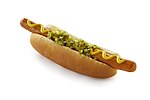Dodger Stadium

Dodger Stadium is a baseball stadium in the Elysian Park neighborhood of Los Angeles, California. It is the home stadium of Major League Baseball's Los Angeles Dodgers. Opened in 1962, it was constructed in less than three years at a cost of US$23 million (US$206 million in 2020 dollars). It is the oldest ballpark in MLB west of the Mississippi River, and third-oldest overall, after Fenway Park in Boston (1912) and Wrigley Field in Chicago (1914), and is the largest baseball stadium in the world by seat capacity. Often referred to as a "pitcher's ballpark", the stadium has seen 13 no-hitters, two of which were perfect games. The stadium hosted the Major League Baseball All-Star Game in 1980—and will host in 2022—as well as games of 10 World Series (1963, 1965, 1966, 1974, 1977, 1978, 1981, 1988, 2017 and 2018). It also hosted the semifinals and finals of the 2009 and 2017 World Baseball Classics, as well as exhibition baseball during the 1984 Summer Olympics. It will also host baseball and softball during the 2028 Summer Olympics. The stadium hosted a soccer tournament on August 3, 2013, featuring four clubs: the hometown team Los Angeles Galaxy, and Europe's Real Madrid, Everton, and Juventus. The Los Angeles Kings and Anaheim Ducks played a regular season game in 2014 as part of the NHL Stadium Series. It is sometimes referred to as “Blue Heaven on Earth,” a nickname coined by Dodgers manager Tommy Lasorda.
Excerpt from the Wikipedia article Dodger Stadium (License: CC BY-SA 3.0, Authors, Images).Dodger Stadium
Vin Scully Avenue, Los Angeles Elysian Park
Geographical coordinates (GPS) Address Phone number Website External links Nearby Places Show on map
Geographical coordinates (GPS)
| Latitude | Longitude |
|---|---|
| N 34.073611111111 ° | E -118.24 ° |
Address
Dodger Stadium
Vin Scully Avenue 1000
90012 Los Angeles, Elysian Park
California, United States
Open on Google Maps





